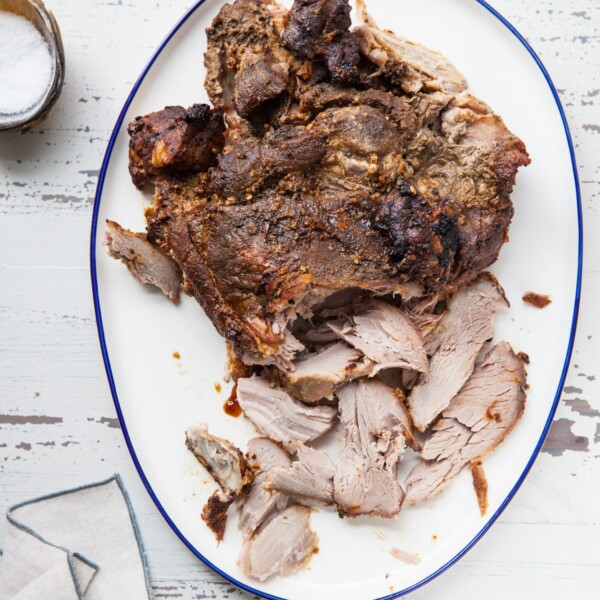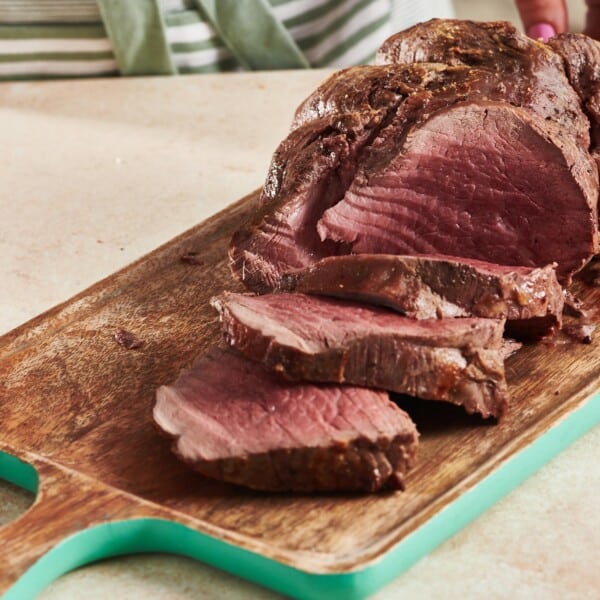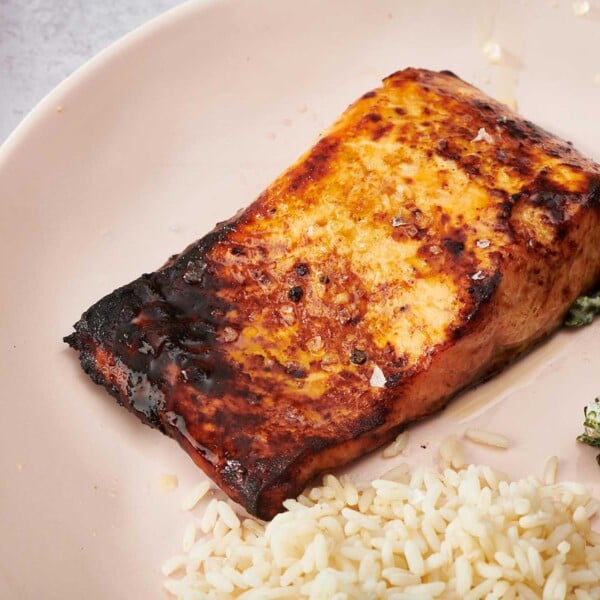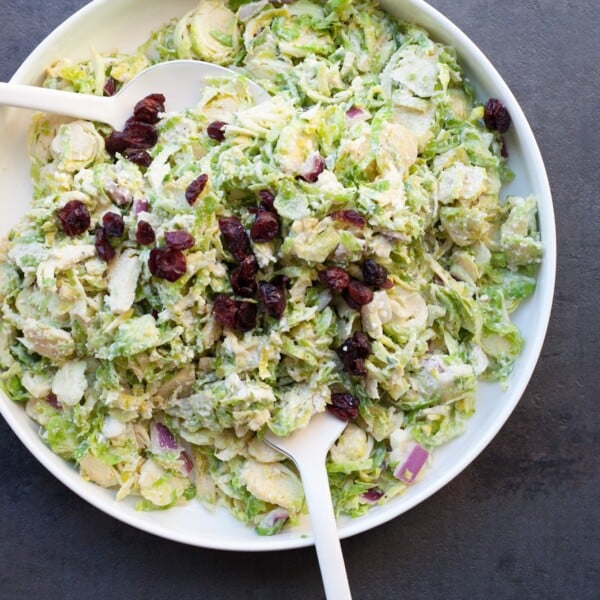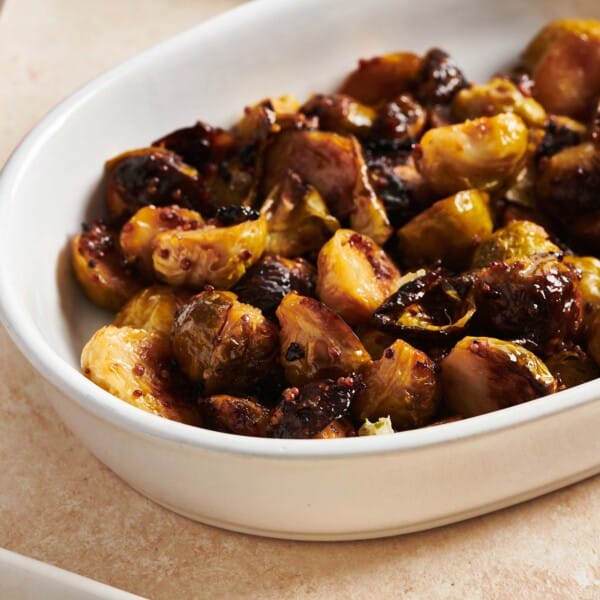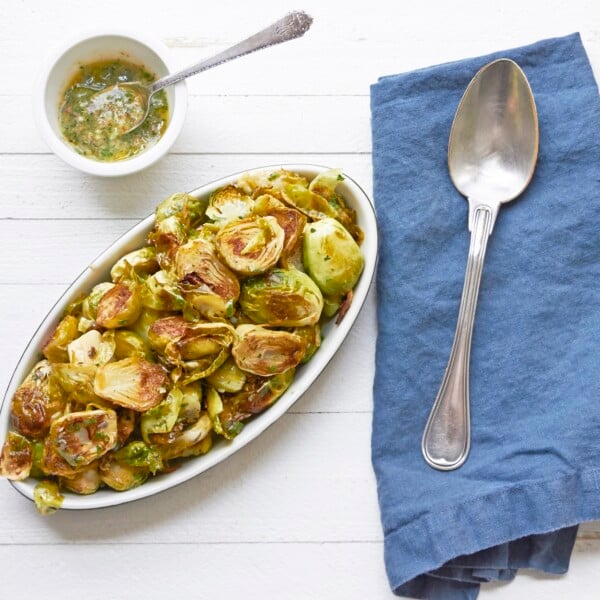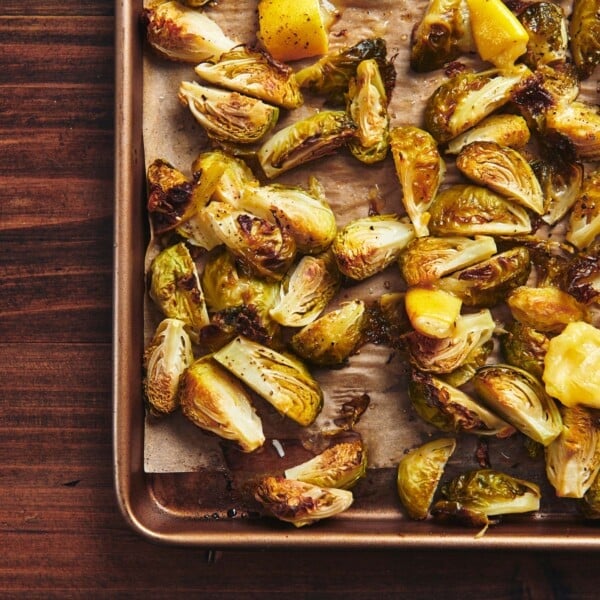Balsamic-Glazed Shredded Brussels Sprouts with Bacon
on Oct 26, 2020, Updated Oct 14, 2024
This post may contain affiliate links. Please read our disclosure policy.
Don't you love a simple 20-minute side dish has so much personality? This is an amazing cold weather side vegetable for all kinds of mains.
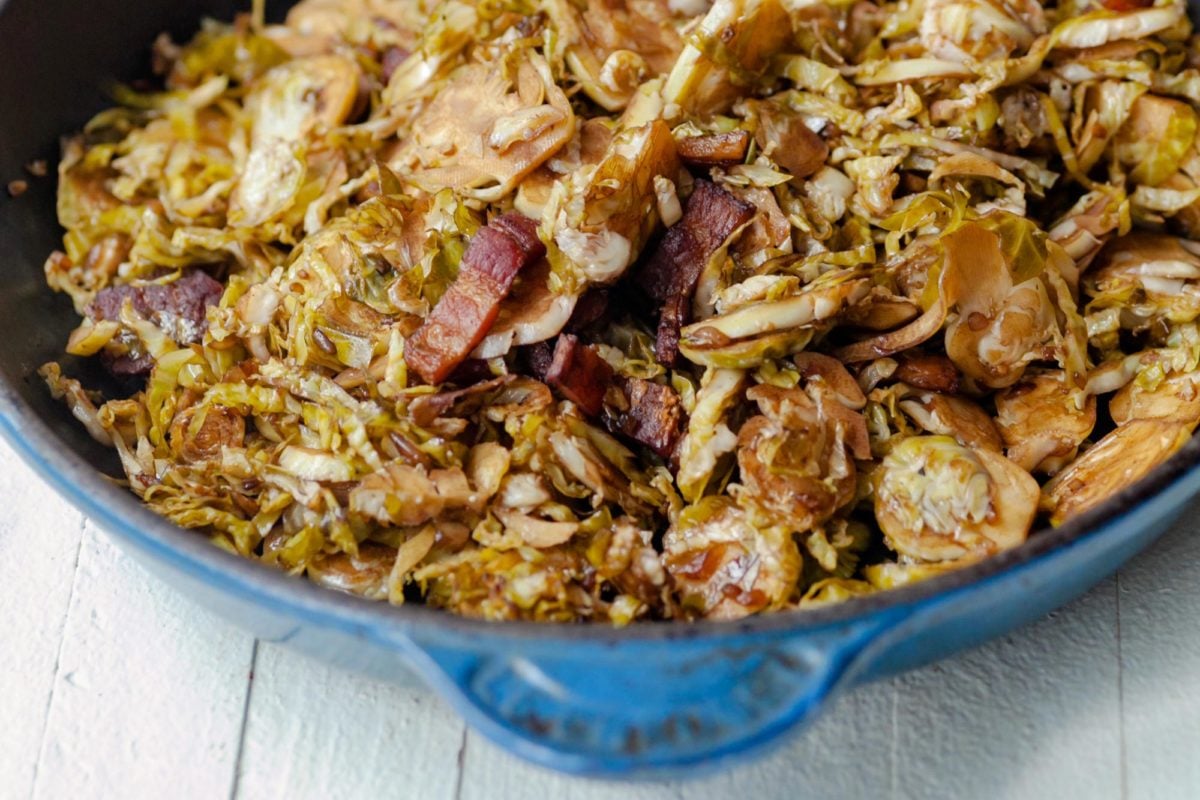
The combo of Brussels sprouts, balsamic vinegar, and bacon is a classic and a winner. Here, the slightly sweet tartness of the vinegar is the perfect foil to tender, earthy Brussels sprouts and salty, crispy bacon. For a terrific fall menu, make these Brussels sprouts along with a Bourbon Brown Sugar Pork Loin and Cheesy Mashed Potatoes. And, think of these for Thanksgiving!
These are perfect the way they are. However, you could leave out the bacon for a vegetarian dish. And if you want a vegan Brussels sprouts dish, skip the Parmesan as well.
By signing up, you agree to our Privacy Policy.
What's In This Post?
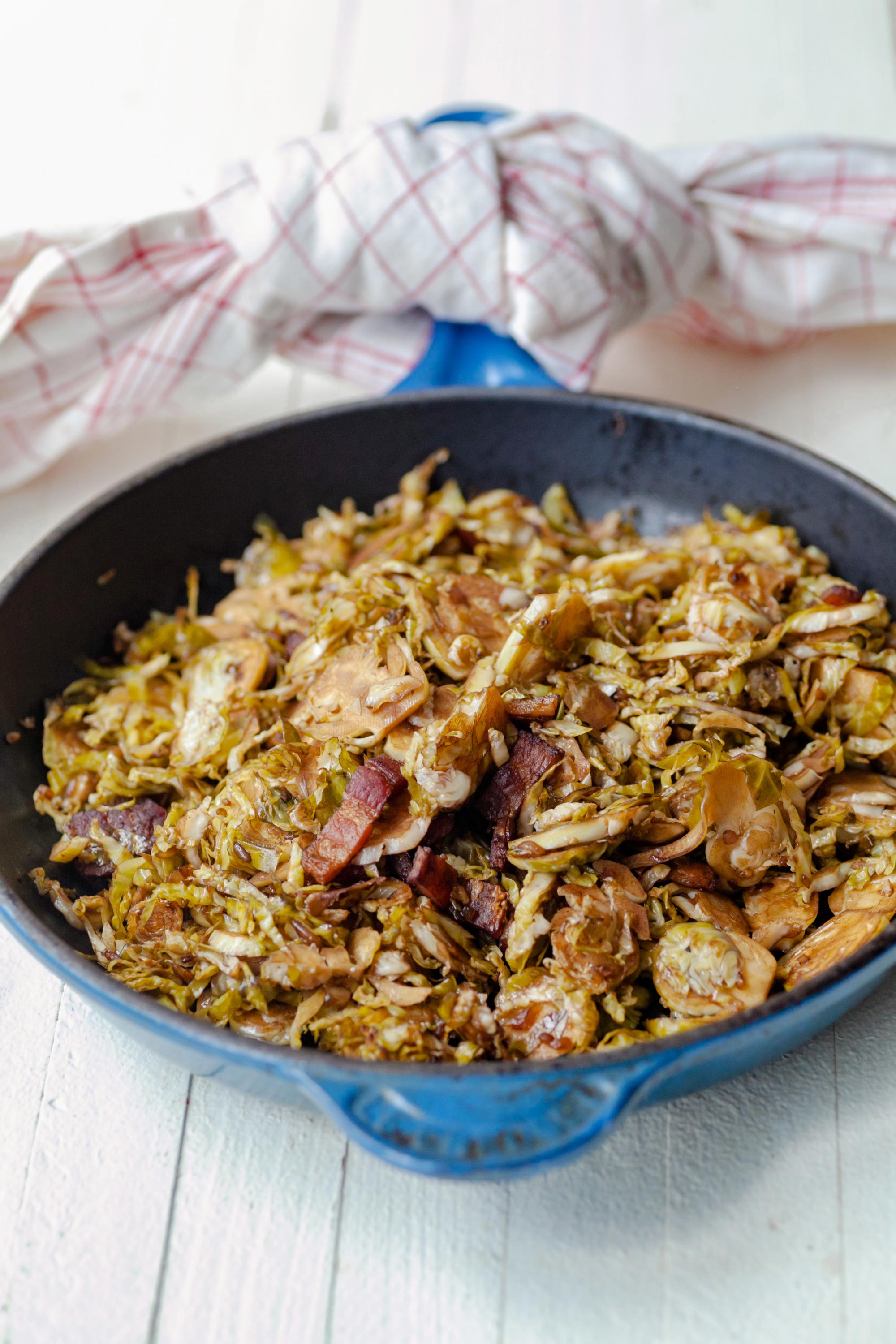
Balsamic Glazed Shredded Brussels Sprouts with Bacon: A simple 20-minute side dish recipe perfect with all kinds of cold weather main dishes.
Ingredients
The name Balsamic-Glazed Shredded Brussels Sprouts with Bacon tells you almost everything you’ll need for this recipe.
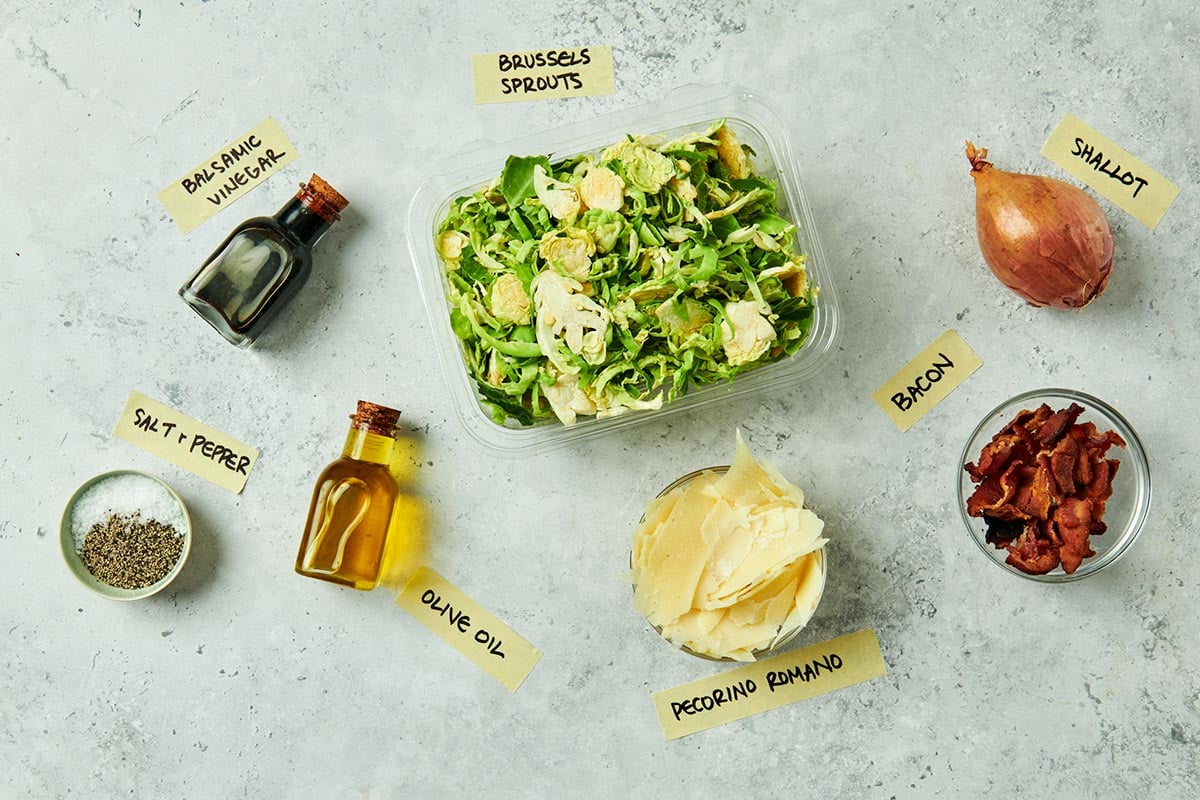
- Olive oil – The olive oil is used to sauté the shallot and Brussels sprouts, adding flavor.
- Shallot – Adds a nice onion flavor and subtle sweetness.
- Brussels sprouts – Shredding the sprouts gives this side dish a light texture. You can buy them shredded, or see below for three ways to shred them!
- Balsamic vinegar – Look for bottles in the market that say Balsamic of Modena PGI, which means it is truly from Modena, Italy, the home base for real balsamic vinegar.
- Bacon lardons or crumbled cooked bacon – This is optional, but it adds an amazing smoky taste and crunchy texture to the dish.
- Parmesan – The cheese is also optional, but it makes this dish even more flavorful and complex.
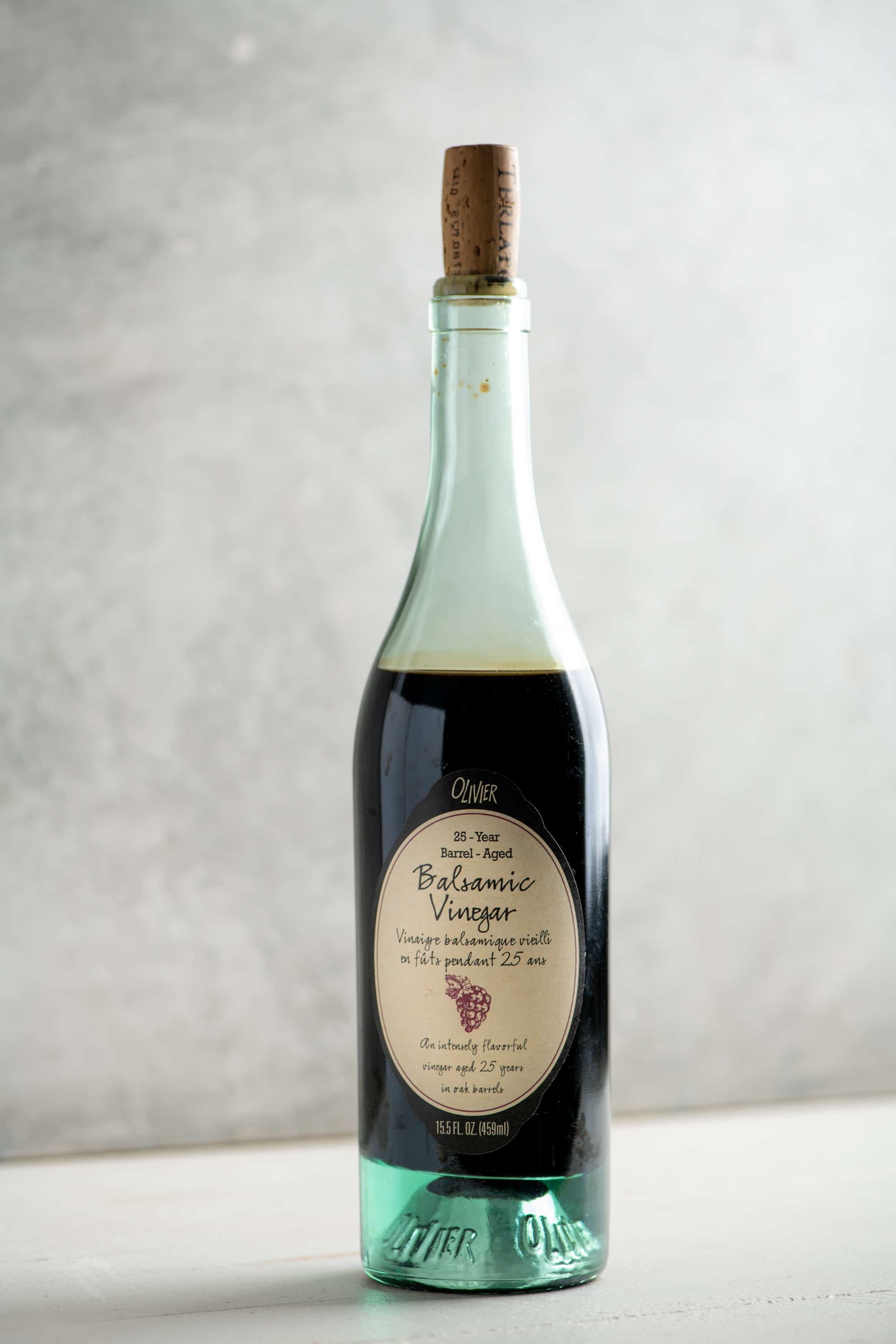
How to Make Balsamic Glazed Brussels Sprouts with Bacon
- Sauté the shallots.
- Add the Brussels sprouts. Sauté until tender.
- Add the vinegar: Allow it to come to a simmer and coat the Brussels sprouts.
- Serve: Serve hot or warm, with the bacon and/or Parmesan if desired.

Tips
- Cooking down the vinegar in the pan brings out its natural sweetness and thickens it into a glaze for the Brussels sprouts.
- You can buy shredded Brussels sprouts if you’re short on time.
FAQs
You can shred Brussels sprouts in a number of ways. There is always a sharp chef’s knife and cutting board. Or, if you have a food processor, simply run the sprouts through the machine using the shredding blade. If you have a mandoline, you can also use that, which will get you paper-thin slices of Brussels sprouts but is a little labor-intensive. After thinly slicing the Brussels sprouts, you may want to give them a rough chop with a knife to make sure the slices aren’t too big; this is less important when you are sauteeing them, as they will wilt down.
True balsamic vinegar (known as aceto balsamico in Italian) is made only in Modena, Italy, and has been aged for a minimum of 12 years in a strictly delineated process. It is made from grape must (musto), which is essentially crushed grapes, with the skin and seeds and everything included. It is dark, fairly thick, and has a notable level of sweetness playing into the tanginess. This is pretty pricy stuff, but if you love it and want to splurge, here is a great place to use it.
What most of us buy in the stores is commercially made balsamic, which is a combination of grape must and white wine vinegar, which is added to shorten the fermentation process. This vinegar is usually aged between three months and three years.
Look for bottles in the market that say Balsamic of Modena PGI, which means it is truly from Modena, Italy. Even if it’s from Modena it still might be quite affordable. However, the fancy stuff, e.g., the handcrafted, more aged versions, are quite a notch above. They usually have DOP or PDO on the label. And if you don’t see Modena on the label, it’s not really balsamic at all. Lots more to know about balsamic vinegar: Food52 has a great explainer on balsamic!
What to Serve With Balsamic-Glazed Shredded Brussels Sprouts and Bacon
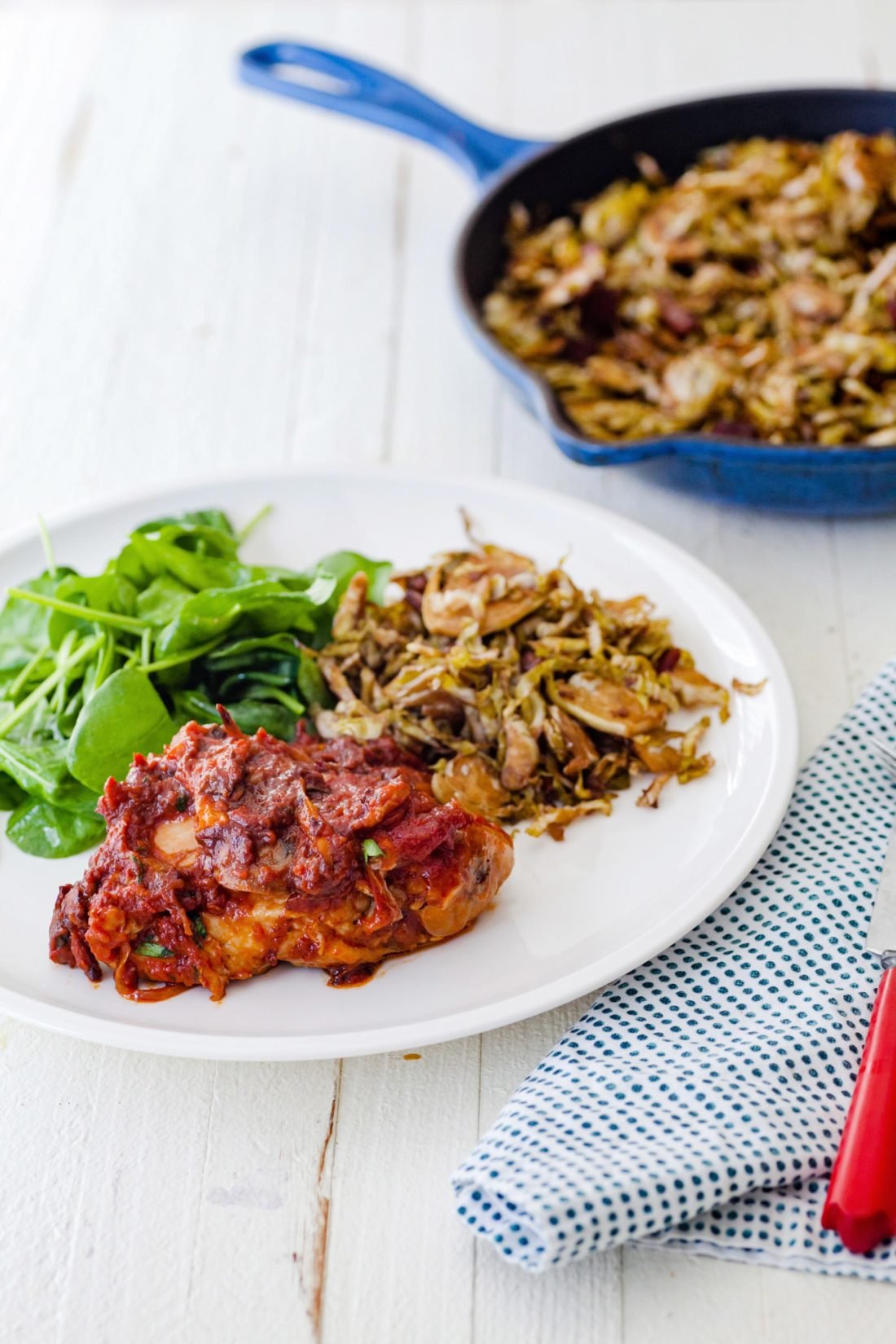
More Brussels Sprouts Recipes
- Air Fryer Brussels Sprouts
- Bacon Wrapped Brussels Sprouts
- Roasted Cauliflower, Brussels Sprouts and Leeks with Spicy Drizzle
- Shredded Sautéed Brussels Sprouts
Also, see How to Cook Brussels Sprouts!
Pin this now to find it later
Pin It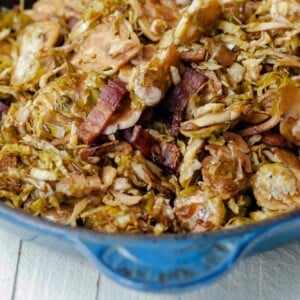
Balsamic-Glazed Shredded Brussels Sprouts with Bacon
Ingredients
- 2 tablespoons olive oil
- 1 shallot (minced)
- 1 pound Brussels sprouts (trimmed and thinly slivered)
- Kosher salt and freshly ground black pepper (to taste)
- ¼ cup good balsamic vinegar
- ½ cup crisp cooked bacon lardons or crumbled cooked bacon (optional)
- Shaved Parmesan cheese (to serve, optional)
Instructions
- Heat a large skillet over medium-high heat, and add the olive oil. Add the shallots and sauté for 3 minutes until tender.
- Add the slivered Brussels sprouts, season with salt and pepper, and sauté for 5 to 10 minutes, until the Brussels sprouts are wilted or as soft as you would like them. Stir in the balsamic vinegar and let it simmer and coat the Brussels sprouts.
- Serve hot or warm, with the bacon and/or Parmesan, if desired.
Notes
- Cooking down the vinegar in the pan brings out its natural sweetness and thickens it into a glaze for the Brussels sprouts.
- You can buy shredded Brussels sprouts if you’re short on time.
- True balsamic vinegar (known as aceto balsamico in Italian) is made only in Modena, Italy, and has been aged for a minimum of 12 years, up to 25, in a strictly delineated process. It is made from grape must (musto), which are essentially crushed grapes, with the skin and seeds and everything included. It is dark and fairly thick and has a notable level of sweetness playing into the tanginess. This is pretty pricy stuff, but if you love it and want to splurge, here is a great place to use it.
